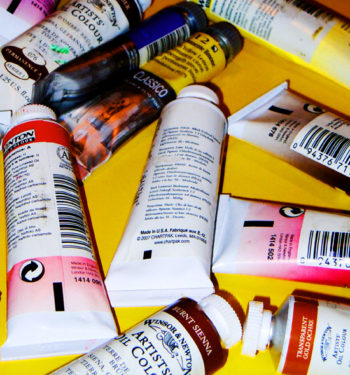While the famous Dutch painter Jan Van Eyck is often credited with the invention of oil paint, pigments mixed with an oily resin have been used since the days when Neanderthals decorated their cave walls.
It is highly unlikely that prehistoric man used linseed oil in these primitive mixtures. Through the centuries the ancients experimented, using a variety of oils, including walnut oil, olive oil, pine nut oil and poppy seed oil.
Some of these oils worked better than others. Deciding on what worked best was a trial and error process. Olive oil was not a popular choice because it dried too slowly. Other binders also had undesirable characteristics, which included cracking and yellowing.
By the time of the Renaissance, painters had settled on linseed oil as the preferred binder in paint formulations. The advantage of oil paint was that it dried slowly, which allowed artists the time needed to blend colors and make corrections before the paint became tacky or dried.
Making a rudimentary oil paint is much easier than baking a cake. In its simplest form it consists of linseed oil and pigment. The oil paint that you buy at your art supply store is, of course, much more complex. Their formulas include additives, such as stabilizers and preservatives.
Paint Safety: Artist Beware
If you want to make your own paint, you can buy pigments on line or at your local art supply store. Use care when handling pigments. Some pigments are comprised of poisonous materials. When handling powders, fine dust particles easily become airborne.
To minimize dust, mix pigments very slowly and work in a well ventilated area. Always wear a good tight-fitting, multi-ply dust mask to avoid breathing dust particles. Protect your eyes by wearing safety goggles. As a final precaution, wear latex gloves when working with pigments.
For more detailed safety information read: Safely Working with Pigment Powders
Oil Paint Recipe
Making a basic, homemade paint simply involves spooning out pigment on a glass sheet and pouring a small amount of linseed oil over it. Mix the oil into the pigment taking care not to unnecessarily raise any dust. You may need to add either more oil or more pigment to the mixture, until you achieve the result desired.
The final step is to grind the mixture using a clear, solid glass grinding tool called a muller. This tool will set you back between $60 and $90 depending on the size that you buy.
Using the flat bottom side of the muller, grind the pigment against the glass panel in a circular motion, until you achieve desired buttery consistency. Because the tool is clear, it allows you to see the paint as you are working.
Using a palette knife, pack the paint mixture into an empty paint tube. Roll up the bottom of the aluminum tube and crimp the end with pliers.
That’s all there is to making oil paint. The only thing easier is to buy the paint already premixed for you in a tube.



